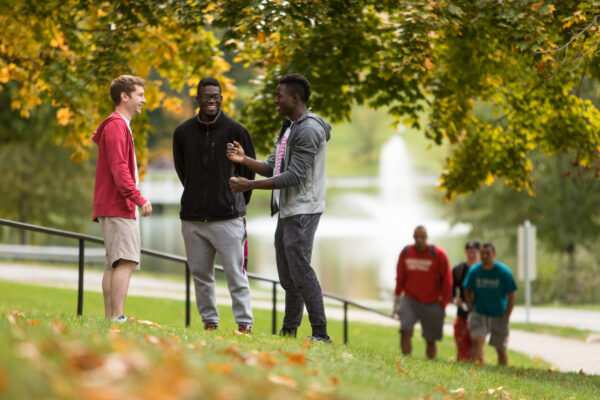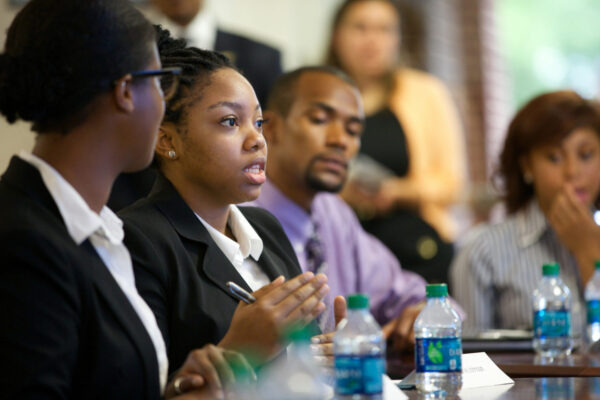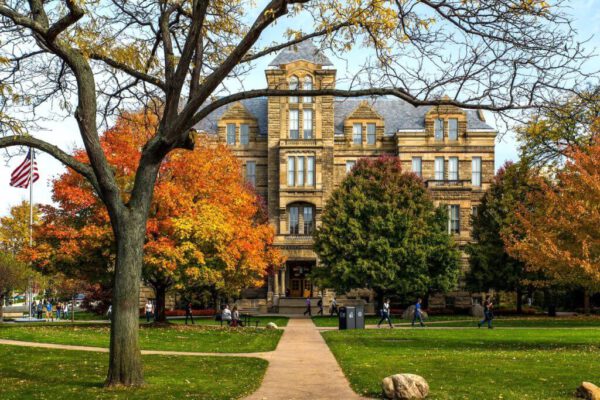By Michelle Behr
In many ways, these are times of upheaval in American higher education. Operating assumptions that institutions have relied upon to guide practice seem no longer to be reliably practical or even wise. Just for starters, colleges and universities are dealing with increasing competition for a shrinking student market that simultaneously is in need of more financial assistance.
For all institutions, but particularly for those of us who work at liberal arts colleges, this new world raises potentially existential questions. How do we recognize and respond to the new conditions in a way that is authentic to who we are? How can we plan intentionally for a sustainable institutional future? What do the new realities within which we exist mean for how we structure and deliver our academic programs, what we offer, and how we work with our students?
I have been provost at Birmingham-Southern College (BSC) in Alabama since July 2014. BSC is a wonderful institution; it truly does right by its students, transforming lives through a rigorous liberal arts curriculum delivered by deeply devoted and talented faculty. At the same time, BSC is just one of many small private colleges with an inadequate endowment and increasing enrollment challenges.
I quickly realized that my understanding of the forces bringing change to higher education generally and affecting our institution in particular—and my sense of urgency about the need to respond—were not necessarily shared by the faculty. The need for action was reinforced in a particularly acute way when Sweet Briar College (VA) announced a plan—subsequently reversed—to close in March 2015.
We are in the business of education, however, and one of the best things about working in higher education is that one’s colleagues are intelligent, thoughtful, creative people. So in devising a plan to address some of BSC’s challenges, why not empower the faculty to learn about and respond to the external environment? And why not use the process as a vehicle to promote and address other institutional ends: encourage real dialogue and build more trust between faculty and the administration; hear from voices in addition to those few vocal senior faculty members; facilitate deeper faculty conversations across disciplinary boundaries; and ultimately help us, as one faculty leader said, to “grow in our capacity to be forward-thinking rather than backward-looking as we imagine our future, in the process strengthening our appetite for risk-taking.”
Collaboration Is Key
In August 2015, the academic leadership (provost, associate provost, and area chairs) at BSC collaborated to build a process, which we came to call “Academic Visioning,” to address these goals. To understand our process, it is helpful to know that our faculty are organized into four interdisciplinary areas that span the divides of traditional divisional structures. Faculty members serve as area chairs, rotating through four-year terms to lead and represent the faculty within their particular area. The academic leadership group meets weekly.
To launch the visioning process, the provost’s office created a set of principles and ground rules laying out the stated purpose: to have forward-thinking conversations about how we can best position and sustain BSC as a residential liberal arts college into the future. We selected topics for monthly discussion along with readings for each topic. The four area chairs assisted by identifying faculty to lead the monthly discussions, providing feedback on how the discussions were proceeding, and helping us determine where and how we might improve the process as it unfolded. We issued a call for proposals toward the end of the academic year, and the area chairs were again instrumental in helping to think through the best strategies to engage faculty in that process.
Principles, Ground Rules and Process
The ground rules for discussions were made explicit from the outset: contributions to the conversations should derive from the readings or other credible sources, not vested interest; multiple voices and a diversity of viewpoints were necessary; and arriving at consensus or a single, particular answer was not the goal, particularly early in the process. The conversations were meant to be cumulative, with one informing the next, culminating in an informed consideration of potential future directions for the academic enterprise at BSC. We wanted to make clear that even though we would address the issues sequentially, these are big, complicated, interrelated challenges and opportunities that form recursive pieces of a larger, more existential conversation about higher education.
Each month, faculty read short pieces focused on one or two topics. We drew readings from sources in the academic literature, white papers issued by higher education organizations, and the higher education press. The provost’s office provided framing questions to guide the discussions, though there was no requirement that they adhere to the issues raised by our prompts.
There was no magic to either the topics or the particular readings we selected, and they did not cover the entire range of what is written about the present and future of American higher education. We made a pragmatic decision to provide enough scope and context without overwhelming people who were otherwise very busy. We began with a discussion of the liberal arts in the 21st century, followed by changing faculty roles; changing student demographics; the evolving financial landscape; new technologies; alternative sources of competition; increasing external scrutiny and accountability; and the structure and purpose of higher education. We circled back around to the topic of the liberal arts in the final discussion.
Each month’s faculty-led discussions took place first in the smaller area group (about 30 faculty), and then a week later as a dedicated part of our regular monthly faculty meeting. Having two chances to speak to each topic—one in a smaller group and the other in a larger gathering—was helpful and, I think, another element that helped the process to succeed. Although there was initial skepticism and suspicion about the endeavor, as the year proceeded, informal discussions among smaller groups of faculty were reportedly taking place in various corners of the campus.
The ‘So What’
In March, the provost’s office issued a call for proposals: the ‘so what’ of the entire process. We invited faculty to think creatively and proactively about how academic affairs could contribute to the health, growth and stability of BSC through curricular and other kinds of innovation. Ideas in four categories were solicited: broad academic initiatives (for example, addressing advising or workload); academic programs and majors; badges, certificates and concentrations; and course-related innovations. Six parameters for consideration were articulated in the call: 1. consonance with mission; 2. potential to be revenue enhancing or cost saving; 3. awareness of the external environment (responses to current or future forces and realities); 4. enhancement of institutional visibility (advancing or creating distinctiveness); 5. collaborative; and 6. sustainable fiscally and programmatically.
From a full-time faculty of just under 100 individuals, 35 proposals were posted to our learning management system visioning site. A special faculty meeting of the whole was called during which proponents of each proposal were given a maximum of two minutes each to pitch their idea. That meeting was followed by an online survey, open for two days, in which faculty could weigh in on each proposal. The survey was completed by over 80 percent of the faculty.
After the survey, six proposals had strong support, and self-selected interdisciplinary working groups of faculty were formed to develop preliminary implementation plans. Each working group presented final reports and recommendations at the area meetings, again followed by a meeting of the whole in which faculty formally endorsed the six priority proposals. Three of the proposals are major additions or enhancements to our curriculum and an additional three are more broadly concerned with the student experience at BSC. The non-curricular ideas have been referred to various other campus constituencies for consideration and, we hope, endorsement once their feasibility is determined. Faculty groups are hard at work in collaboration with the provost’s office to bring the curricular proposals to fruition beginning in the fall of 2017.
Lessons Learned
Every campus has its own culture, its own traditions and its own level of engagement in shared governance. Reflecting upon what made our experiment work, I believe it was that we allowed for an organic and evolving process, one that enabled us to correct course and add or subtract pieces as needed. At the same time, our flexible process was built upon a structured base. It helped that we had established ground rules at the outset so that we had time to let the process unfold and evolve, and having both small and large group discussions ensured that there were multiple opportunities for faculty to participate.
That this was both a top-down and a bottom-up endeavor was, I believe, also critical to its success. While there was a lot of grumbling in the beginning, and much questioning of the provost’s office’s motives, in the end we have collectively built an awareness of the challenges and opportunities that BSC faces—and a new creative and cooperative partnership that is willing to take informed risks to make a real and sustainable change for the future.
If you have any questions or comments about this blog post, please contact us.


